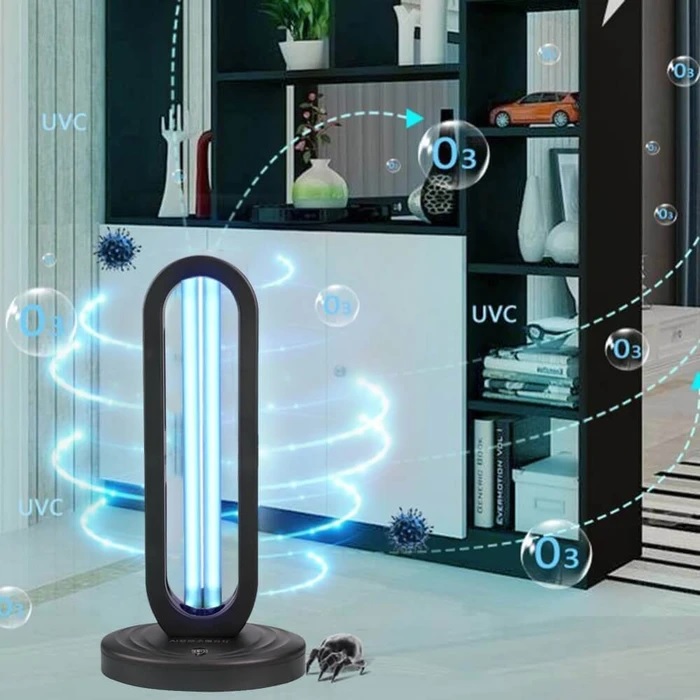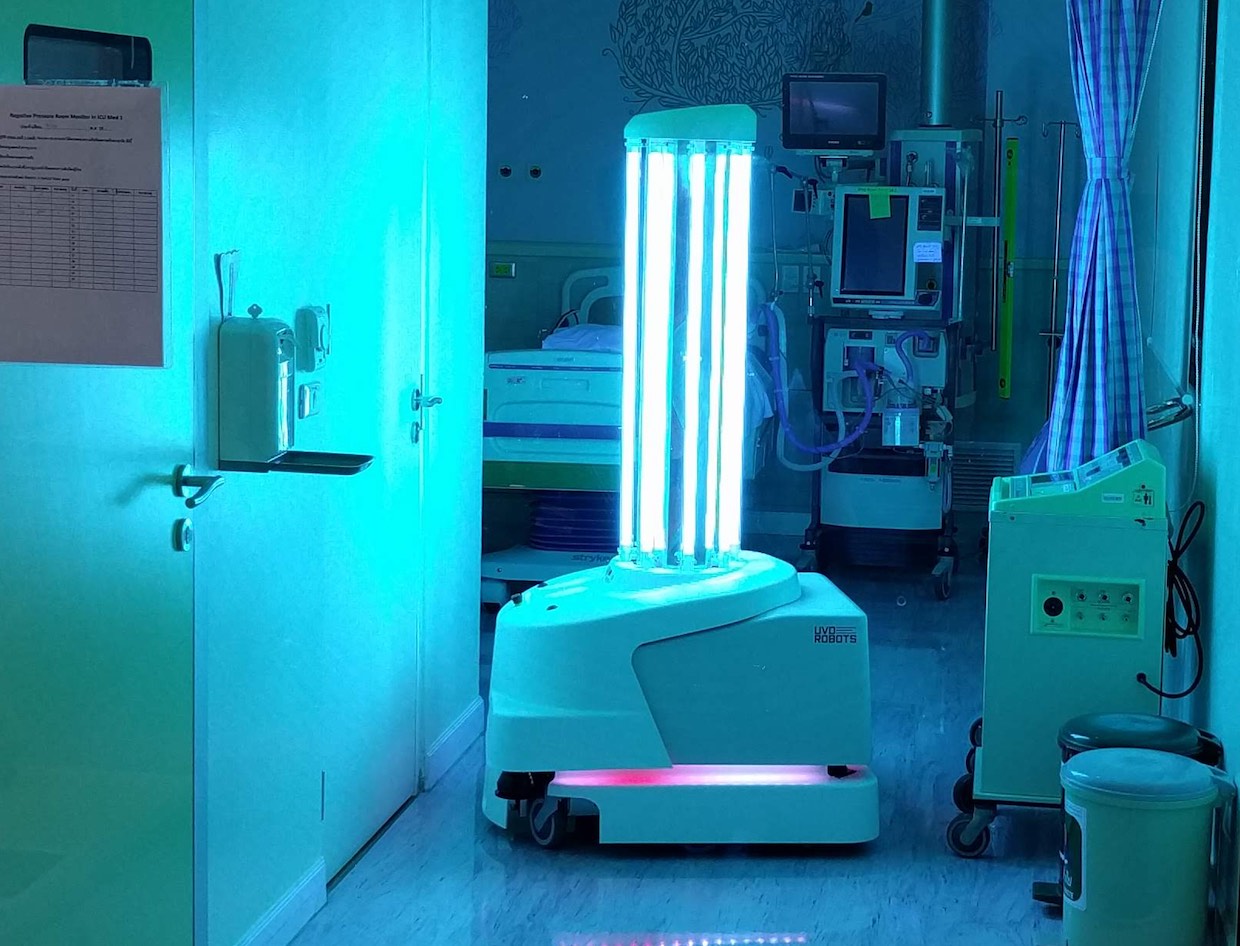Is A UV Light Disinfection Lamp Effective Against Corona
2021-03-08 by hqt
How effective is a UV Light Disinfection Lamp against Corona?
It is the most ecologically viable source to disinfect air and surface from harmful viruses, bacteria, and other microorganisms. The ultraviolet light disinfection lamp damages harmful microbes by disrupting their DNA to inactivate their ability to reproduce. Because it throws ultraviolet light with less than 290 nm wavelengths, it is lethal against germs and bacteria. Its powerful germicidal effect disinfects the air and eliminates infections due to airborne transmission of deadly bacterial pathogens. The UV lamp utilizes UVC radiation without using any destructive synthetic compounds. As a result, it doesn’t cause any harm to human skin directly exposed to the UV lamp.
An adage quotes, “sunlight is the best disinfectant”. In many developing nations, people use sunlight to sterilize water. However, many of us might not know that it is the UV component of sunlight that makes the impact.
The US Food and Drug Administration reports that UV light is an effective tool to disinfect bacteria causing tuberculosis. Technology has gradually been making its way into domestic as well as industrial culture. Nowadays, UV lamps or germicidal lamps sterilize environments at home and workspaces in various industries. They improve air quality by effectively disrupting the growth of bacteria and their reproduction. Due to the effectiveness of UV lamps for sanitation, everything ranging from air quality to well-being of health gets better.
Is UV light disinfection lamp effective against Corona?
Before finding it out, let us first explore the role of UV radiation as an effective tool to inactivate microbes. The sun produces three types of UV rays. People are generally familiar with UVA and UVB radiations because they can cause skin cancer or sunburn. UVC is the high-energy radiation-emitting shorter-wavelength.
Since the ozone layer does not let these radiations reach the earth, humans get exposure to impressive artificial UVC light. The UVC light uses accurate wavelengths to destroy microbes and germs in the air, water, and on the surface. When the DNA and RNA of microbes and germs absorb the UV light, they break down. UVC light can inactivate 99.9% of pathogens including bacteria, viruses, and microbes. As viruses are not living organisms technically, the UV light deactivates them precisely.
Coronavirus first emerged in official reports in December 2019. The reports suggested that the virus remained alive on certain surfaces for three days maximum. Besides, it could transmit through air. Since the outbreak of the Coronavirus in 2019, there was a need to restrain airborne viral transmission of this disease.
UV light was impressive against deactivating SARS-CoV-2, a root cause of COVID-19. There was a need to disinfect surfaces and air to get rid of corona within a short time of the virus’s production. However, to date, it remains unclear about UV radiation’s frequency, dose, and period needed to inactivate the beta version of the coronavirus. Although the high potential of UV radiation is extremely dangerous for COVID-19 patients, the UV light disinfection lamp remains a hopeful disinfectant tool.
1. Efficacy of UVC disinfection lamp in hospitals
UVC or germicidal lamps have extensive use to disinfect surfaces in microbiological laboratories, food manufacturing processes, and drinking water. They also disinfect the air in medical facilities like hospitals. Many hospitals robotic lamp, which emits UVC. The device self-adjusts according to space around the room. Once people leave the space the device administers the UV light until it is necessary. Given the fact that the Coronavirus primarily spreads through aerosol particles, some facilities use UVC lamps to disinfect the recirculated air by installing them in air ducts. Such lamps are expensive and need trained persons to operate them. Besides, individuals should not use them.
2. A question mark still looms on the effectiveness of UVC disinfection lamp
The UVC or germicidal lamps have an impressive track record against SARS – CoV-1 and MERS. Both types of viruses have a close association with SARS-CoV-2. UVC light doesn’t just harm human DNA, it can effectively damage the genetic material in other living organisms. So, a lamp that emits UVC light may be an effective disinfectant tool against corona. Although manufacturers speak high of the germicidal lamp, they do not specify the extent of the lamp’s ability to kill the coronavirus. So, despite UVC light’s potential to inactivate coronavirus, there is no surety that UV disinfection lamp will deliver.
3. A UV light disinfection lamp poses health issues
A myth prevailed suggesting a UV lamp could disinfect hands and other parts of the body to avoid corona. But it proved ineffective. Direct exposure to conventional disinfection lamp radiation can cause serious problems for the human eye and skin. For example, certain facilities, such as hospitals use mercury vapor-based disinfectant lamps to fight against germs in a relatively shorter period. Extra care should be taken to clean such equipment because mercury is a toxic substance. Moreover, the mercury’s ability to emit high-frequency UVA and UVB light can cause serious dangers for the skin. So, it leaves us with a challenge to find a UV lamp, which can effectively disinfect viruses or Corona without posing the risk to health.
4. Limited exposure to UVC disinfectant lamp does not inactivate microbes and viruses
Another problem with UVC lamps is that they can disinfect only unoccupied spaces. It is not possible to use them for disinfection when public spaces are occupied. The studies have shown that UVC radiation is beneficial only if it keeps the human body safe while eliminating the virus. Further, if anything blocks the radiation, the lamp might not inactivate the germs or microbes present in the atmosphere. The light rays wouldn’t be effective at wiping out germs if anything like dust, soil, or shadow obstructs them. And such obstructions raise the question about the effectiveness of a UV disinfectant lamp against corona.
5. Is a UVC disinfection lamp risky?
UVC lamps can cause safety risks depending upon the duration of exposure, amount of doze, and UVC wavelength. Most disinfectant lamps emit less dose of UVC, so it is unclear if they can effectively inactivate viruses. It might take longer for such lamps to potentially deliver against corona. Some studies find that UV disinfectant lamps may produce ozone which can kill microbes. However, it should be very much clear that breathing in ozone could be irksome to the lungs.
So, it is better to stick with approved recommendations to avoid COVID-19. We should wear masks and observe social distancing till a UV lamp proves effectively disinfecting corona impact.
Summary
While UV lamps can inactivate viruses present in the droplets in the air, researchers put some reservations. According to them, a UV light disinfection lamp is effective only if it has direct exposure to a virus or bacterium.
We can infer that if the coronavirus has a covering in the shape of dust, or soil, etc. the lamp might fail to disinfect the affected surface. We conclude that it is not appropriate to expose the human body to UV light to target cells affected by Covid-19. So, nobody knows how long it takes a disinfection lamp emitting UV light to deactivate the Coronavirus.
For More Information, Contact Us Today!



